I just watched John Ford's Stagecoach on Turner Classic Movies. I think I've seen it six or seven times, but each time I see it again, I marvel at its brilliance. It is that rarest of movies: one that combines both action and character studies. It used to be said that novelists always write the same book, and there's a strong argument to be made for Hemingway's novel, Islands in the Stream being nothing but a second take of his earlier work, To Have and Have Not. And surely the young handsome Henry (better known as the Ringo Kid) of the black and white Stagecoach (1939), is nothing but a youthful version of Ethan Edwards in Ford's color masterpiece, The Searchers (1956), where he's gone long in the tooth. The point is, film directors, like novelists, are the authors of their works. As the French film critics -- a lot of them, eventually filmmakers themselves -- used to say, good directors are auteurs.
I bring all of this up because I recently read a piece by David Denby in The New Yorker glorifying the career of the relatively obscure Victor Fleming who, admittedly, would deserve at least a line or two (or a footnote at the very least) for having worked on both Gone With the Wind and The Wizard of Oz in the same year, 1939. But that was the year that Ford made Stagecoach as well, and as much as I like both of the Fleming films, I would take neither of them into forced exile on a desert island, allowed only a DVD player and a couple of dozen motion pictures. I suspect The Searchers would be one of them.
In "The Real Rhett Butler," Denby does a fine job of chronicling Fleming's career, and had the latter directed nothing more than his 1932 Red Dust, he would be justifiably celebrated. And who can deny that The Virginian (1929) has its memorable moments (remember Gary Cooper saying "Smile when you say that"?). Certainly Bombshell ('33), Treasure Island ('34), and Captains Courageous ('37) are enjoyable pictures, packed with what Denby characterizes as "brusque masculine humor," but Denby glosses over Fleming's many mediocre movies, things like Mantrap, Hula, and White Sister.
The news peg for Denby's piece (published in the magazine's "Critic at Large" section) is the publication of two books that illuminate Fleming's career: one, a biography by Baltimore Sun film critic Michael Stragow; the other, a revisiting of the making of Margaret Mitchell’s novel into film by Molly Haskell. Interestingly, Haskell happens to have been married to another film critic and historian, Andrew Sarris. It was to Haskell that Sarris dedicated his 1968 paperback book, The American Cinema: Directors and Directions 1929-1968, a work I've long believed deserving of a newer edition, a mammoth undertaking given the number of films that have been made in the past forty years.
Now it so happens that although Denby ridicules the auteur theory, most of the films of Fleming he likes best happen to be the same ones Sarris set off in italics in his filmography of Fleming, his means of identifying the masterworks of each filmmaker he discusses, distinguishing them from lesser works in regular type. Sarris also divides American filmmakers into categories with novel if sometimes cloying titles, e.g. "Pantheon Directors" (the Hitchcocko-Hawksian school), "Lightly Likeable" (people like John Cromwell and Michael Curtiz), and "Strained Seriousness" (Stanley Kubrick, Sidney Lumet, John Sturges). Sarris put Fleming into an innocuous category called "Miscellany").
To impart some indication of how I value Sarris' book, I must add that I have two copies; one that I bought and one given to me by Stephen M. Silverman, who wrote a very fine book on The Films of David Lean. My older copy is tattered, the result of a teething puppy's chewing frenzy, and well thumb-smudged from constant and repeated referencing. Yet, it is never far from my TV monitor. The other, Stephen's, a reprint, is safely put away, opened only when I have misplaced the first edition.
Curiously, although he mentions Pauline Kael, one of his predecessor film critics at the New Yorker, Denby says nary a word about Sarris. And this despite the fact that he uses the occasion of the publication of the Fleming books in a vain attempt to elevate the man to Sarris' so-called "Pantheon." I say vain, because despite all of Denby's praise, despite his glowing re-views of the half dozen works by Fleming that could justifiably be called great, nothing Fleming did, and certainly not his entire canon, can be said to measure up to the individual movies and collected works of Ford, Hawks, Hitchcock, Lang, von Sternberg, Renoir, or Welles. Give me a DVD of the restored Touch of Evil and you can have a hundred DVD's of Tortilla Flat, the great Spencer Tracy notwithstanding.
The long tracking shot across the
Fleming knew nothing about moving actors through the frame as Welles does in a Touch of Evil city hall sequence featuring Heston, Ray Collins, and Joseph Calleia weaving in and out of each other as they speak what might be throw-away lines in another filmmaker's hands. All Welles films, as do all films by Ford, Hawks, Hitchcock, and the other American auteurs, have this distinctive, signature style, what British film critic (and editor of Sight and Sound) Penelope Gilliat called "the figure in the carpet." Fleming did not, and that is the plain truth of the matter.
I was browsing in our local Half Price Books the other day and was amazed to learn that Da Capo has reprinted Andrew Sarris's American Cinema with a cover blurb on the back explaining the qualities that distinguish an auteur director from a studio hack: independence of mind, a willingness to buck producers, studio heads, and the money men; placing a personal stylistic or thematic stamp on the movies made, &c. I thought of Sarris's "Pantheon" directors vis-a-vis people like Victor Fleming. Both he and Welles were subjected to studio medling; for example, Welles' The Magnificent Ambersons was re-edited by the studio while the filmmaker was off in South America doing It's All True, a kind of documentary about native life in
It's very likely Denby would agree that the finished Ambersons is a very good picture, but one wonders how much better it would have been had Welles been allowed to cut it himself and present it according to his own plan. (It’s said that Welles demanded complete control over Touch of Evil, but then he had Charlton Heston in his corner (the actor said he would not star in the film unless Orson helmed). The result is a masterpiece by anyone's standards.
Contrast this 1958 Welles film noire with "Fleming's" GWTW. Perhaps Denby should have perused a few other sources prior to attempting to elevate Fleming to the status of an American auteur. Take for example Lawrence Grobel's 1989 biography, The Hustons: The Life & Times of a Hollywood Dynasty. Grobel implies that John Huston would have merited a higher placement in the hierarchy of genius of auteur theorists like Sarris had the man not believed in tackling disparate genres and ambitious, at each outing tackling new, seemingly more difficult projects unlike previous efforts. But, then there are as many Annies in the Huston canon as Maltese Falcons.
In any case, Grobel interviewed Oswald Morris, the British "lighting cameraman" (
Morris told Grobel: "David Selznick genuinely believed that the producer was more important on a film than the director." Anyone who doubted this, Grobel wrote, "would be asked to name the director of Gone With the Wind. 'Nine out of ten people couldn't tell him,' Morris said, 'and then he'd ask who produced it, and they'd all say David Selznick. That was his set piece.'" Huston ultimately backed out when differences arose, including concentration on Ms. Jones to the detriment of Hemingway's intentions. Instead of helming A Farewell to Arms (Selznick hired Charles Vidor to direct what turned out a flop), Huston made Roots of Heaven in Africa, and if anyone wonders why that movie was such a loser, take a look at the Clint Eastwood picture, White Hunter, Black Heart, based on Huston friend Peter Viertel's novel of the same name. Huston had a habit of signing on to direct pictures in which he had little interest, viewing the project as an opportunity to travel, go hunting, &c. , as the Grobel biography illustrates again and again.
Years ago, I had a spirited debate about the auteur theory with one of Denby's predecessors in the film critic's slot at The New Yorker, the late Pauline Kael. She was a guest lecturer in a course I took at the
Now, I don't mind admitting -- 46 years later -- that 8 1/2 was vastly overrated at the time. To my mind, it doesn’t hold a candle to Fellini’s La Dolce Vita, made the previous year and representing not only his own finest work but the full flowering of Italian neo-realism. But I suspect that even Kael had reacted so negatively to Fellini's dreamy, expressionistic, autobiographical work because it insisted that he was an auteur; that is, it had stylistic conventions and bore the indelible stamp of its director's personality. And Kael was one of the staunchest opponents of auteur criticism. At times it almost seems as if she were writing with a grudge against not only Sarris but the entire British and American auteur crowd, which was by then represented by an English edition of the French magazine, Cahiers du Cinema.
The auteur theory reminds me of the famous dictum of the theoretical physicist who said that those who are not astonished by the implications of quantum mechanics have failed to grasp its meaning. Denby betrays a naivete and misunderstanding of auteur theory. Just one example of this confusion is his apparent belief that since not all auteurs turn out perfect pictures each time they call “wrap” on a new one, and because some non-auteur directors make masterpieces themselves now and then, the auteur theory is thus disproved. This is hardly the case. Once can use examples from Sarris's italicized examples of worthy auteur movies for a given year and compare and contrast them with lesser works from non-auteurs the same year to clarify this point. For example, in 1958, when Hitchock was shooting Vertigo, William Wellman was making Darby's Rangers and Lafayette Esquadrille.
Now, take up, say, Steven H. Scheuer's Movies on TV (1990 ed.) and check out his ratings and reviews of these three movies. (The fact that Wellman made two films in '58 only proves he was more in demand and perhaps planned his works with less deliberation and more subservience to studio demands.) Scheuer, giving Vertigo four stars (his highest rating), calls the movie "a spellbinding work" and devotes about three inches of a column in his description of it. He says of Darby's Rangers, reviewed in less than in inch of space and given two stars, that it's an "uneven war drama," and of Lafayette Esquadrille, given one and a half stars and meriting only a one-sentence description, that it's "corny and melodramatic." (Of course, Scheuer may have had an aversion to Tab Hunter, who starred in the second film.)
Now, unless he or she is a war film nut, I'll wager you can look hard and long and never find a cineaste who prefers these two combat pictures over Vertigo. Yes, it is true that Wellman's Wild Boys of the Road, Nothing Sacred, and The Oxbow Incident are all finer works than Hitchcock's Jamaica Inn, Mr. and Mrs. Smith, and Lifeboat, but that is besides the point.
I'm willing to wager that if you walked into any of these lesser movies by Hitchcock well into the action you would, within a very few minutes, know exactly who directed it (and I am not thinking of those "signature" scenes where Hitch makes an appearance himself, whether it is missing a bus during the opening credits of North by Northwest, walking across the screen carrying a double bass fiddle in Strangers on a Train, or exiting a pet shop in San Francisco with a couple of well-coiffed terriers in tow in The Birds. I am talking about the technique, written about extensively by Robin Wood and others, of psychologically putting the audience into the position of the protagonist by use of subjective camera angles, as when he has Marnie (in the film of that name) sneaking into an office with theft on her mind and cutting away to views of what she sees in tracking shots so that her slow, stealthy creeping is shown from her point of view (and therefore ours). This was part of Hitch's genius. He discovered this technique and used it to great effect; it has been much imitated (where would the early Brian De Palma be without Hitchcock) but never mastered so brilliantly.
Like Huston, Wellman sometimes found remarkable visual equivalents to the emotions of his characters as when, in the latter's Track of the Cat, he shot in color but emphasized black and white (including the heavy snow of the mountains), reducing the foreground visual elements to precious few colors so that when Robert Mitchum goes out to destroy a mountain lion that has been killing his livestock, his red woven coat stands out starkly in an almost 3-D effect. (Spielberg must have had this film in mind when he follows a Jewish orphan in red in the otherwise black and white Schindler's List. As the great Jay Leyda once observed, “films beget films.”) For all his reputation as a "
Or, take the argument from genre. Some anti-auteurist critics may be heard to argue that the indelible stamp of an auteur derives from their propensity to make the majority of their films within a particular genre: Ford (westerns), Capra (socially-conscious comedies), Sirk (sophisticated, socially-conscious soap operas), and so forth, so it's only natural that one might miss the first 15 minutes of a Ford, Capra, or Sirk film and simly guess the director's identity. And for that matter, these critics argue, some directors held in low esteem by the auteurists sometimes make superior westerns, comedies, and soap operas. For example the themes of The Unforgiven by Huston are quite similar to those of The Searchers by Ford. When Groble's biography of Huston is consulted, however, one realizes that the auteur of The Unforgiven was Burt Lancaster, who did not get along with Huston and who had a friend and supporter in the money-man, his producer partner, James Hill. At some point while making the film, Grobel reveals, Huston simply gave up.
Denby's basic premise is flawed. In championing Fleming, he writes:
"The auteur-theory critics who, in the nineteen-sixties and seventies, went wild over Cukor, Hitchcock, Preminger, John Ford, Howard Hawks, Ernst Lubitsch, Josef von Sternberg, Frank Capra, and many other directors of the late silent and early sound periods, ignored Fleming...."
Wrong. Sarris, for example, as has been mentioned, not only included Fleming in American Cinema, he lists some 42 Fleming movies and italicizes ten, indicating merit, whereas he could simply have placed Fleming in “Subjects for Further Research,” the home of Tod Browning, Sidney Franklin, and Henry King, rather than in “Miscellany.” It might be said that one out of four is not bad, but one suspects Sarris failed to see all of the movies he lists; after all, why would anyone resuscitate Fleming's 1925 silent adaptation of the Joseph Conrad novel, Lord Jim when the serviceable (and at times engaging 1964 version by Richard Brooks (categorized as "Strained Seriousness," along with Jules Dassin, Stanley Kubrick, and Sidney Lumet!) is available on DVD?
But, back to Denby:
"...[Fleming] made a number of entertaining movies in the nineteen-twenties and his two super-productions of 1939...likely the most widely seen movies in American film history -- not just good pictures but films that have entered the unconscious of generations of moviegoers...."
Wrong again. One suspects that Denby is taking at face value the opinions of Flemings work as asserted in the two books he's critiquing, Stragow's and Haskell’s, begging the question, just how many Fleming works did these authors sit through? I cannot recall the estimates and statistics, but a significant number of pre-WWII movies, including a huge number of silents (a lot of them on brittle, highly flammable nitrate stock, sometimes found as dust in their original cans in old studio vaults) are simply no longer available for viewing, whether in 35- or 16-mm. or in VHS, video disc, or DVD format. One has to wonder, for example, if Denby, Stragow, or Haskell caught a screening of Fleming's 1922 Red Hot Romance, or his 1924 Empty Hands, or his 1926 Blind Goddess. (The only reason I saw every film Josef von Sternberg ever made – save the unfinished, brilliant I, Claudius – was because he did a seminar at UCLA in, I think, 1966. He screened them all for us and I befriended him simply by asking that he inscribe his autobiography, Fun in a Chinese Laundry.)
When Denby remarks that Fleming made "a number of entertaining movies" in the 20's and 30's, one might observe that "2" is a number, as is "3." From that period, Sarris italicizes nine such films, possibly suggesting that Fleming had reached his peak in those years. Of his 1940's output, Sarris heralds only 1943's A Guy Named Joe, which Scheuer gives only 2 1/2 stars, and although Stephen Spielberg obviously thought enough of it that he remade it in 1989 as Always, that film, too, is fairly mediocre.
If GWTW and Oz "entered the unconscious of generations of filmgoers," it was not necessarily the direction of Fleming that worked the magic. After all, when the former film was made, censorship in Hollywood had gone to such extraordinary lengths that men could not be shown on bed with a woman unless one of the man's legs was on the floor; it was, therefore, shocking to audiences to hear Rhett quip, "Frankly, my dear, I don't give a damn." (The word, "damn," was not allowed, unless it was essential to the scene and faithful to the adapted work.) And how many people prior to the latter film saw movies with flying uniformed monkeys and a witch who cackled, "I'll get you and your little dog, too"?
The point is, Sidney Howard, Ben Hecht and three other writers put Margaret Mitchell into film form for Fleming (who, Denby allows, shared directorial duties with William Cameron Menzies, Cukor, Sam Wood, and others) for GWTW, and Fleming had Noel Langley, Forence Ryerson and twelve other writers scripting Oz, and direction of that film was aided by Mervyn LeRoy and King Vidor. Whose personality do we see in these two films? My argument is simply that it is difficult if not impossible to tell. They may be good movies, but they're MGM extravaganzas to me. MGM was the Time magazine of film studios, and when a writer worked for Time, he quickly found out that there was a "Time style,” by which I mean formal conventions to which the writer adhered or was shown the exit.
Finally, Denby utters the ultimate canard:
"...[
Wrong. All such directors only occasionally make truly great movies, and the greatness of the movies is as much a matter of their message as the telling of it, or of the lucky concatenation of circumstances that saw, for example, S. N. Behrman contributing dialogue to scenes photographed by William H. Daniels in mediocre director Rouben Mamoulian's 1933 Queen Christina. And Spielberg is hardly one to quote in defense of anti-auteurism. His movies have less personal style than those of, say, John Sturges. I fully suspect Sarris would place Spielberg in "Strained Seriousness," "Lightly Likeable," or "Less Than Meets the Eye." Spielberg has turned out a few brilliant pictures (one thinks of Jaws, which for all its commercialism is a well-paced thriller with superb acting); Close Encounters (as close to a spiritual experience as could be filmed), and Minority Report (which, despite its debt to the late great Phillip K. Dick, is nevertheless one of the most believable, well-executed SciFi films ever made).
Well, really, who can deny that Saving Private Ryan is a masterpiece of the war film genre?
But that is besides the point: the closest Spielberg comes to a stamp of personality -- a thematic and stylistic thread running through almost all his films, and especially his later ones, is his botched, cloying endings. Even in Ryan, for example, do we really need an elderly veteran, played by Matt Damon, collapsing in tears upon locating the
These lapses in taste and failures of discrimination suggest that the director is self-indulgent and could never, ever come up with anything so powerful for an ending than that of Ford’s Searchers: a shot of Ethan Edwards (John Wayne), framed in the door of a prairie sod house as he leaves the security of family and friends for the only thing he has known, the life of a long rider.
And although Ford had his disasters (one of them is The Long Gray Line (inexplicably italicized by Sarris, incidentally – no two auteurists can agree on everything), and although he, too, was given to sentimentality from time to time (and how!), nothing by Ford comes close to being as godawful as Spielberg's duds, films like 1941 and Hook. Simply put, you could never walk into a Spielberg movie 15 minutes after the opening and guess who made it, something which cannot be said of Ford. You may like it, you may know it is awfully well made, but you can't say who made it if you didn't know in advance or catch the credits.
Oddly -- I suppose Jungians would call it a synchronicity -- a friend from Dallas (John W. Gaston, a former professor of theatre) sent me a copy of the May 29, 2009 Chronicle Review, an educational journal my friend says is mostly published so that its authors do not perish, if you know what we mean. This issue, which came out just four days after the New Yorker piece by Denby, had an essay titled "The Color of Minnelli: His Style Was Substance," by Thomas Doherty, a Brandeis University professor. In it, he quotes Sarris, dubbed "the high priest of auteurism," as observing that Vincente Minnelli was "more a stylist than an auteur," a rather meaningless phrase that taken out of context might lead the reader to think Sarris himself thought that style played a relatively minor role in auteur criticism. Hardly.
Doherty also quotes Emanuel Levy's book about Minnelli, Dark Dreamer, as implying that the filmmaker was neurotic and sought to put on the screen the visions of a man "tormented and dark, possessed of a soul whose gaudy spectrums mask inner demons." (Where, oh where is Susan Sontag now that we really need her? Her essay, "Against Interpretation" would help rescue this director of stylish entertainments from such crypto-Freudian analyses.) In another work about Minnelli, an anthology of world-wide criticism, Doherty references an essay by Joe McElhaney, Hunter College film professor, who "lauds the body-switching gender farce Goodbye Charlie (1964) and the leaden The Sandpiper (1965) as 'two very uneven but interesting and important films,'" and concludes that McElhaney "might be dipping too deeply into the auteurist Kool-Aid."
Now, just what does that mean? As urban slang, "Kool-Aid," came into being in the wake of the Jim Jones affair in
I, for one, understand McElhaney's point. It was the same point that guided the curator's philosophy of the Cinematheque, whose Henri Langlois, a devout auteurist, believed that no movie is bad, that all movies have at least something in them, if only a scene -- even a few frames -- that entertain, horrify, provoke laughter, jerk tears, or inspire with technical innovation. Many of us even love so-called "good bad" movies, and one filmmaker, Tim Burton (an auteur to my way of thinking, if there ever was one) even directed a biography about one such kitschmeister, Ed Wood. It's not for nothing, either, that Jean-Luc Godard, a friend of Langlois, has Michel Piccoli wearing a sporty little hat in the bathtub in a sequence from his Le Mepris (in the U.S., Contempt), in homage to Minnelli's Some Came Running, in which Dean Martin refuses to remove his Rat Packer’s hat all through the movie.
Like Denby, Doherty reveals how little he actually understands about auteur theory when he writes, of Dutch humanities professor Thomas Elsaesser's conribution to the McElhaney collection:
"In a bemused prefatory note to an essay he wrote on Minnelli in the 1970s, when, he says, auteur studies 'had already become quite unfashionable,' Elsaesser now seems reconciled to the persistence of the director's vision as ground zero in film studies...." The persistence of the director's vision is what the auteur theory is all about, and it is this same persistence of vision that earns an auteur a place in Sarris's "Pantheon." Auteur studies only became unfashionable if you were reading critics like Kael; Sarris and others never wavered from their allegiance to the aesthetic.
Make no mistake (unless you are David Denby trying to raise the director to the status of an auteur while simultaneously denigrating the theory itself), Victor Fleming was no auteur. He was a competent, reliable filmmaker who, like Huston, occasionally turned in a masterwork. He never made a single film as worthwhile, as brilliant, as lasting as Monsieur Verdoux, My Darling Clementine, Intolerance, Red River, Metropolis, Sunrise, Letter From an Unknown Woman, The Scarlet Empress, or Citizen Kane.
Fleming made some good movies, but he was no Chaplin, Ford, Griffith, Hawks, Lang, Murnau, Ophuls, von Sternberg, or Welles.
Not by a long shot.
+(2).jpg)
.jpg)
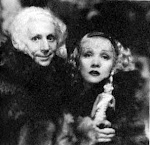+(3).jpg)
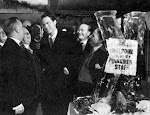+(4).jpg)
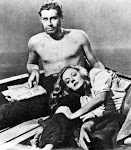+(7).jpg)
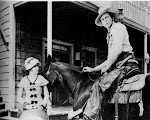.jpg)
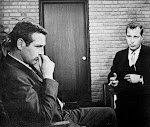+(6).jpg)
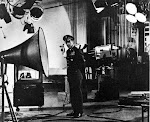+(5).jpg)
.jpg)


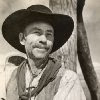




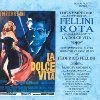

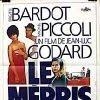

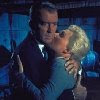
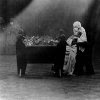
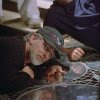





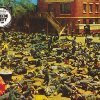

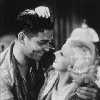


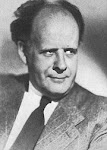

















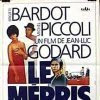


No comments:
Post a Comment